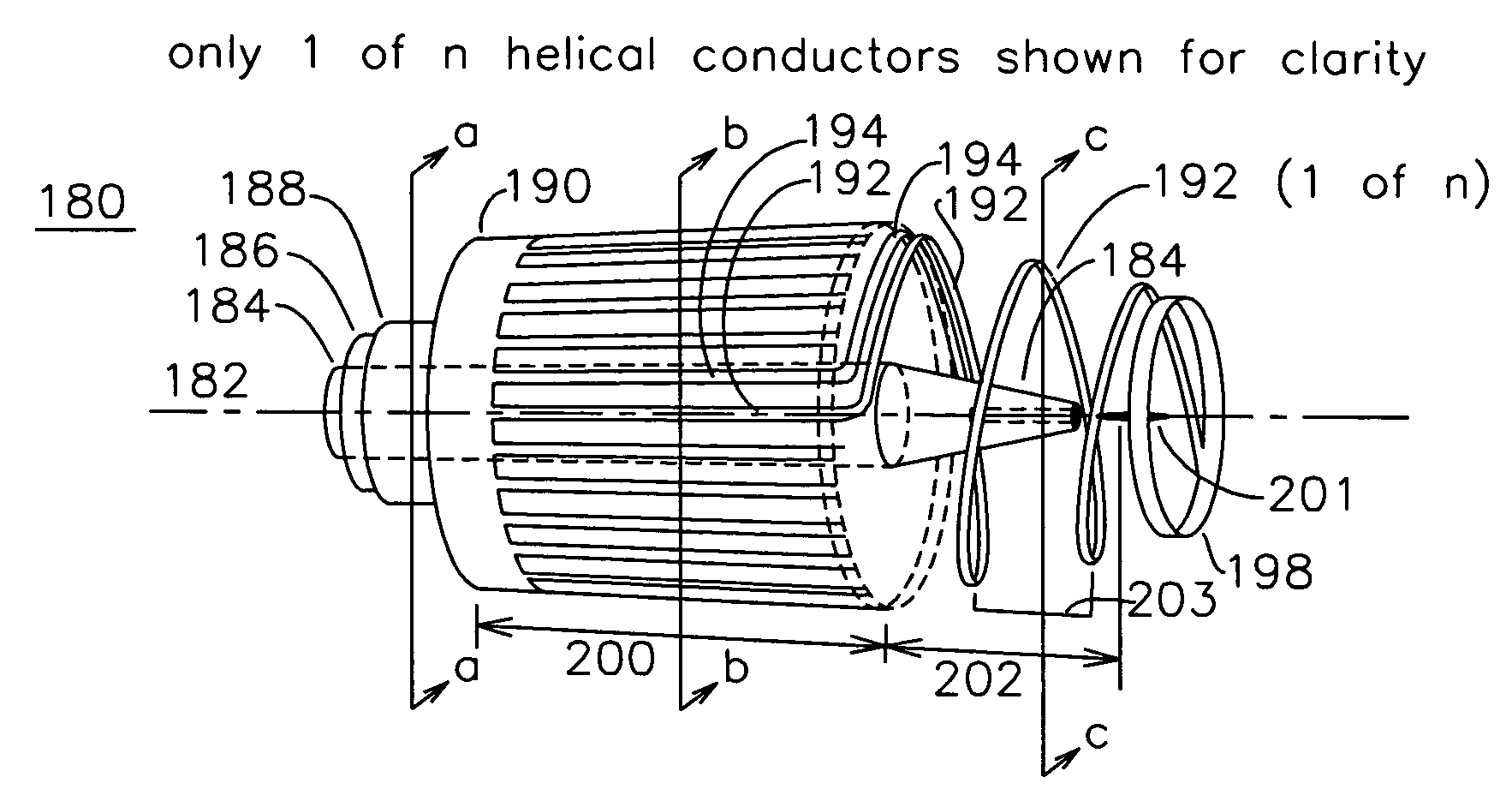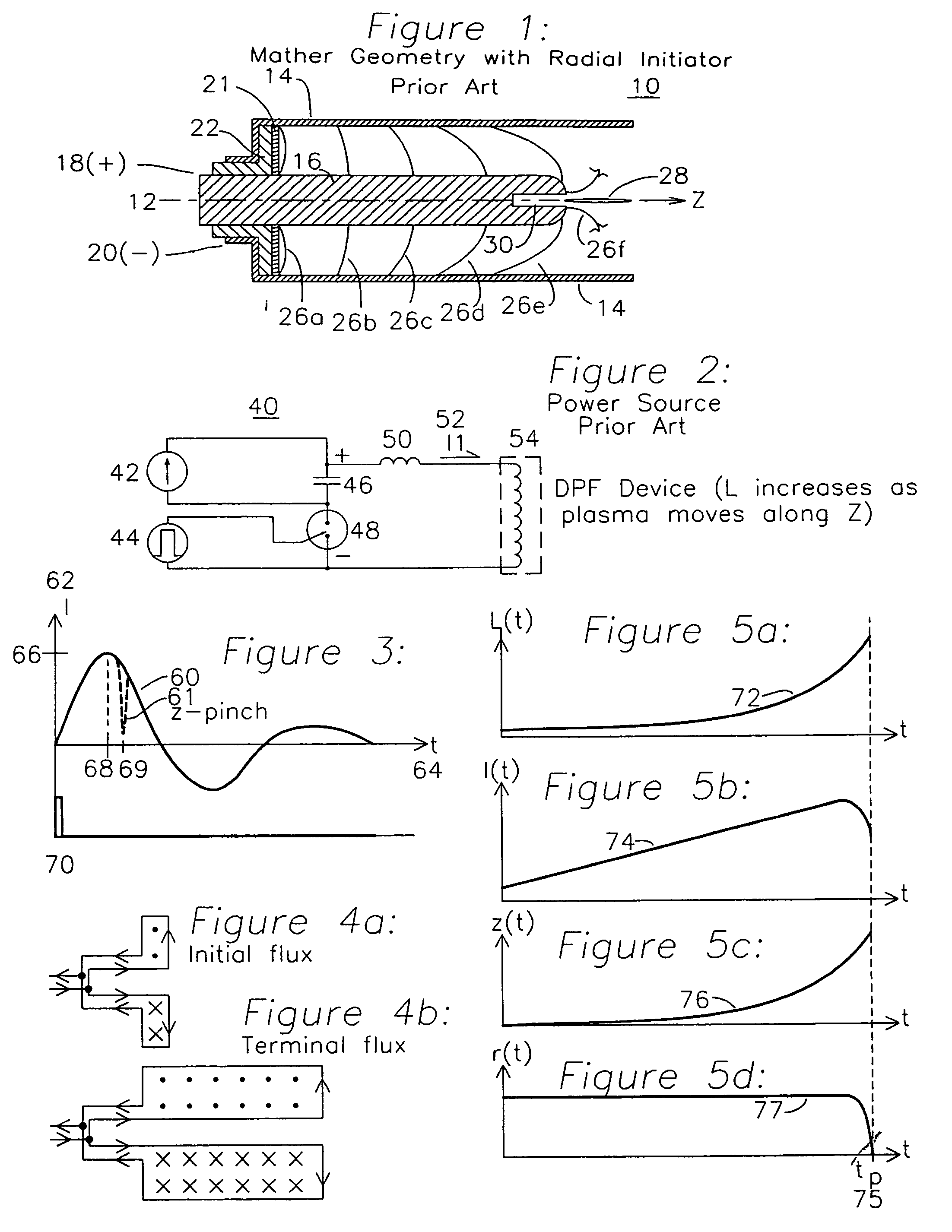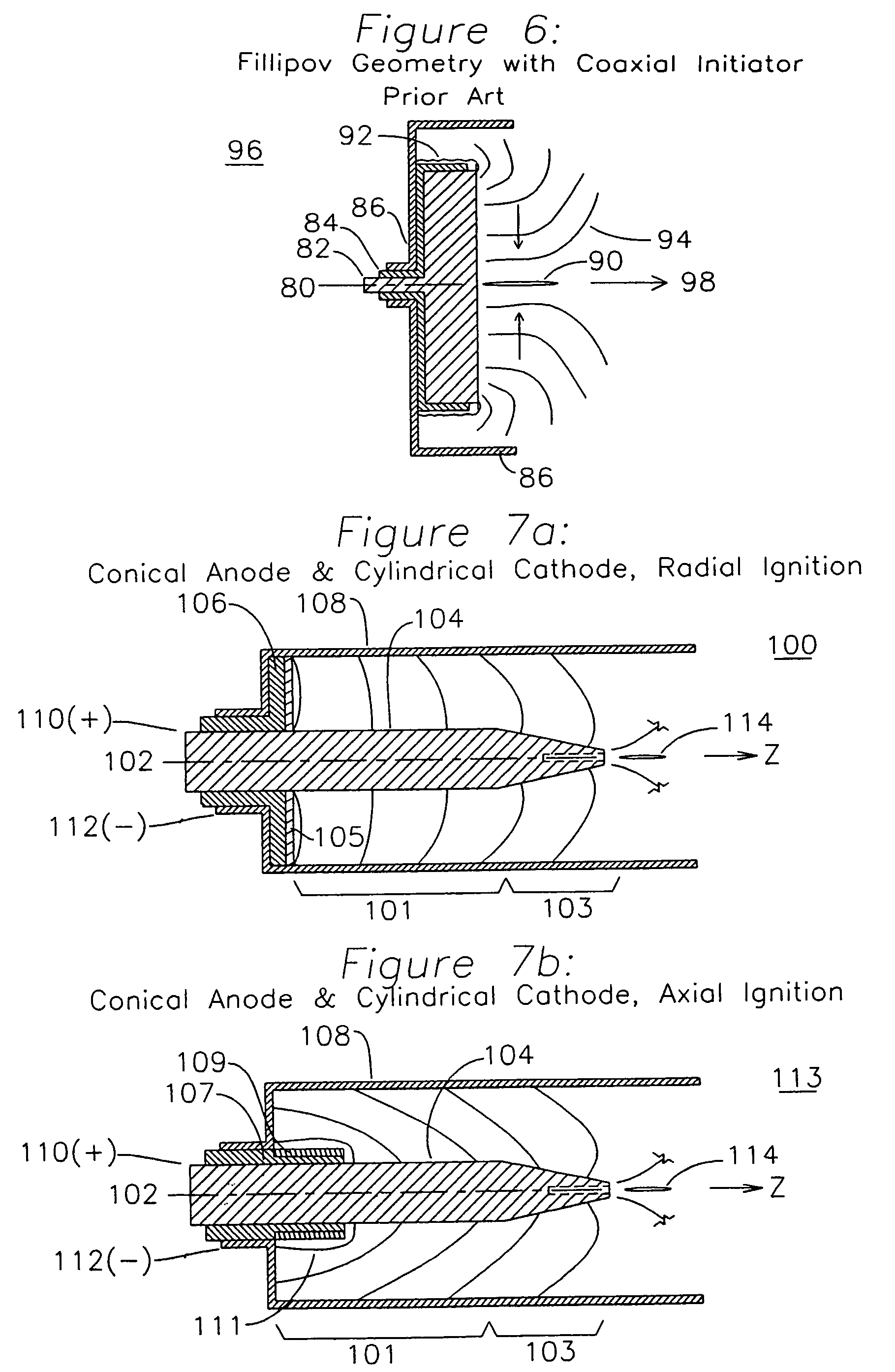Dense plasma focus apparatus
- Summary
- Abstract
- Description
- Claims
- Application Information
AI Technical Summary
Benefits of technology
Problems solved by technology
Method used
Image
Examples
Embodiment Construction
[0033]FIG. 7a shows a dense plasma focus device 100 having an axis 102 and an inner electrode 104 which is cylindrical over a first plasma acceleration extent 101 and tapered over a final plasma acceleration extent 103. The inner electrode 104 is surrounded by a cylindrical outer electrode 108, and is insulated in a plasma initiation end by insulator 106. The insulator 106 serves to ensure the electrical isolation of the inner electrode 104 from the outer electrode 108. On a surface of insulator 106 is a plasma formation surface which is formed from a refractory insulator 105, typically ceramic or glass, which allows the repetitive formation of a high temperature plasma without damaging the underlying insulator 106. After formation of the initial plasma on the surface of the plasma formation disk 105, the plasma expands into an azimuthally continuous radial sheet from the inner electrode 104 to the outer electrode 108. The insulators 105 and 106 also provide a region behind the plas...
PUM
| Property | Measurement | Unit |
|---|---|---|
| Length | aaaaa | aaaaa |
| Length | aaaaa | aaaaa |
| Length | aaaaa | aaaaa |
Abstract
Description
Claims
Application Information
 Login to View More
Login to View More - R&D
- Intellectual Property
- Life Sciences
- Materials
- Tech Scout
- Unparalleled Data Quality
- Higher Quality Content
- 60% Fewer Hallucinations
Browse by: Latest US Patents, China's latest patents, Technical Efficacy Thesaurus, Application Domain, Technology Topic, Popular Technical Reports.
© 2025 PatSnap. All rights reserved.Legal|Privacy policy|Modern Slavery Act Transparency Statement|Sitemap|About US| Contact US: help@patsnap.com



